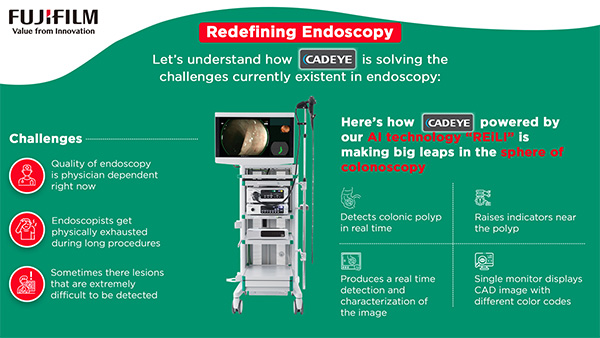Just In
- 49 min ago

- 8 hrs ago

- 9 hrs ago

- 12 hrs ago

Don't Miss
- Sports
 DC vs SRH Dream11 Prediction IPL 2024 Match 35: Squads, Fantasy Tips & Best Picks
DC vs SRH Dream11 Prediction IPL 2024 Match 35: Squads, Fantasy Tips & Best Picks - Finance
 1:10 Split, Rs 299/Sh Dividend: Tata's Steel Stock Up 11% In 30-Days, Better Than Nifty; PL Says Accumulate
1:10 Split, Rs 299/Sh Dividend: Tata's Steel Stock Up 11% In 30-Days, Better Than Nifty; PL Says Accumulate - Movies
 Bigg Boss Malayalam 6 Elimination Update: Jaanmoni Gets Evicted From Mohanlal’s Show? Here’s What We Know
Bigg Boss Malayalam 6 Elimination Update: Jaanmoni Gets Evicted From Mohanlal’s Show? Here’s What We Know - News
 Police To Enhance Security At Courthouse For Trump's Trial After Disturbing Incident
Police To Enhance Security At Courthouse For Trump's Trial After Disturbing Incident - Education
 Exam Pressure Does Not Exist; Studying Punctually is Crucial; Says Aditi, the PSEB 2024 Topper
Exam Pressure Does Not Exist; Studying Punctually is Crucial; Says Aditi, the PSEB 2024 Topper - Automobiles
 Suzuki Swift Hatchback Scores 4 Star Safety Rating At JNCAP – ADAS, New Engine & More
Suzuki Swift Hatchback Scores 4 Star Safety Rating At JNCAP – ADAS, New Engine & More - Technology
 Dell Introduces AI-Powered Laptops and Mobile Workstations for Enterprises in India
Dell Introduces AI-Powered Laptops and Mobile Workstations for Enterprises in India - Travel
 Journey From Delhi To Ooty: Top Transport Options And Attractions
Journey From Delhi To Ooty: Top Transport Options And Attractions
Fujifilm Launches New Software Version Of ‘CAD EYE’ In India
Fujifilm India, the visionary leader in technology and innovation is pleased to announce the launch of a new software version of "CAD EYE", a function that supports real-time detection of colonic polyps during colonoscopy utilizing AI technology. This updated function will be essential for colon polyp detection and characterisation, which will be achieved by utilising a type of Artificial Intelligence (AI) called deep learning. The launch was announced at the India Live Endoscopy Forum 2021 held on 25th-26th September, an event where eminent leaders and top experts from the industry share the stage to discuss the latest technological advancements in endoscopy.

In India, the annual incidence rates (AARs) for colon cancer in men are 4.4 per 100000, respectively and the AAR for colon cancer in women is 3.9 per 100000. Every individual needs to remain vigilant when it comes to keeping their health in check through regular-health check-ups and identification of any symptomatic pattern. Fujifilm has continuously worked on the development of image processing technologies over the years to improve the detection rate of rare lesions and tumours. The Indian healthcare sector is now constantly updating its mechanism and bringing in new technologies that will not only ensure a safe today but also a safer tomorrow.

The new detection and characterisation functionality of CAD EYE together with the polyp detection function will be available with software EW10-EC02 and the compatible expansion unit EX-1 in combination with Fujifilm's ELUXEO systems and colonoscopes. CAD EYE was originally developed to support real-time detection of colonic polyps utilising AI technology. When a suspicious polyp is detected within the endoscopic image, a Detection Box indicates the area where the suspicious polyp has been detected, accompanied by a sound signal. The new CAD EYE Detection and Characterisation will assist clinicians by generating a suggested histological prediction by displaying whether the suspicious polyp(s) in the image are hyperplastic or neoplastic.

Speaking on the launch of this latest function, Mr Koji Wada, Managing Director, Fujifilm India said, "Fujifilm has always been at the forefront of healthcare development and evolution, and has continued to work towards providing new and technologically relevant solutions to help manage the health-crisis this nation faces along with the rest of the world. Cancer has been a prolonging disease in our society and a cure for it is yet to be fully discovered. Hence, it becomes extremely necessary that we detect this problem at the beginning of its growth, and manage to treat it with the pre-existing treatments. With this new function for "CAD EYE", colon polyp detection and characterisation will be completed in real-time and will save time for technicians and patients alike. We hope that this technological advancement bears the fruit of the immense hard work that all Fujifilm researchers and scientists put in every day."
The Graphical User Interface (GUI) for "CAD EYE" was designed to minimise the endoscopists' eye movements during a procedure, displaying the detection and characterisation result and the Visual Assist Circle around the circumference of the endoscopy image. The Position Map is placed directly next to the side of the clinical image to show which area of the video image CAD EYE is focusing on. This lessens the burden on the endoscopist and helps them understand the generated image in a much-detailed manner.
Fujifilm India will continue to strive to make basic healthcare facilities and products available to all Indians which would help make them lead healthier and better lives. Our goal remains to rid the world of the diseases it is currently plagued by, and create a scintillating standard for the healthcare industry by innovating consistently.


 Click it and Unblock the Notifications
Click it and Unblock the Notifications



